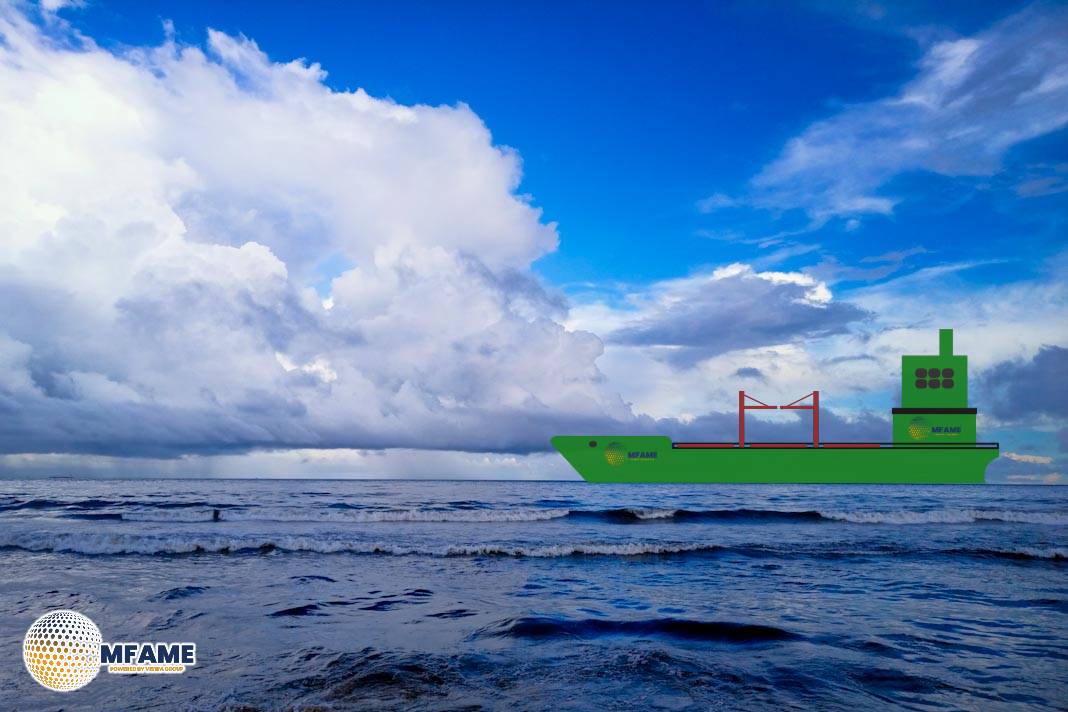- Ammonia emerges as a leading clean-fuel contender, with over 40 ammonia-capable vessels on order and major engine manufacturers preparing dual-fuel technologies for delivery by 2026.
- High costs, safety risks, and limited infrastructure remain key barriers, as green ammonia currently costs up to five times more than marine gas oil and requires specialized handling systems.
- Global collaboration and policy incentives—including carbon pricing, green financing, and port readiness—will be essential to transform ammonia from a promising pilot fuel into a mainstream solution for maritime decarbonization.
As the global shipping industry accelerates its push toward decarbonization, ammonia has emerged as one of the most promising alternative fuels on the horizon, reads a DNV release.
Once considered an experimental option, ammonia is now gaining traction as a viable pathway toward net-zero emissions. Its carbon-free combustion and established global trade infrastructure make it an attractive candidate—but challenges in cost, safety, and technology still stand in the way of large-scale adoption.
Rising Momentum in Ammonia-Powered Shipping
Ammonia’s potential as a marine fuel is no longer theoretical. Around 40 ammonia-capable vessels are already on order worldwide, with deliveries expected to begin in 2025 and 2026. These include bulk carriers, tankers, and gas carriers equipped with dual-fuel engines developed by leading manufacturers such as MAN Energy Solutions, WinGD, and J-Eng. Projects like Fortescue’s Green Pioneer and pilot tugs in Japan and China are further demonstrating ammonia’s readiness for real-world operations.
Regulations are gradually catching up with technological progress. DNV’s classification rules for ammonia-fueled ships and the International Maritime Organization’s interim guidelines are providing shipowners with clearer safety and compliance pathways. Amendments to the International Gas Carrier (IGC) Code now allow ammonia carriers to use their cargo as fuel, although comprehensive amendments to the International Code of Safety for Ships Using Gases or Other Low-Flashpoint Fuels (IGF Code) are not expected until 2032.
Technical and Economic Challenges
Despite the optimism, the path toward ammonia adoption is complex. One of the most pressing issues is energy density. Ammonia contains less energy per unit volume compared to marine gas oil, requiring larger storage tanks or reduced cargo capacity. This trade-off poses design challenges, particularly for long-haul vessels where range is critical.
Cost is another obstacle. Building ammonia-ready ships typically costs 15–20 percent more than conventional vessels. For certain ship types, such as Aframax tankers, this premium can rise to nearly 19 percent. Retrofitting older vessels is even more expensive, sometimes reaching up to 60 percent of a ship’s residual value.
Fuel price is an additional concern. At present, green ammonia—produced from renewable energy—is nearly five times more expensive than marine gas oil in Europe. Blue ammonia, derived from natural gas with carbon capture, offers a more affordable interim solution but remains limited in supply. However, as production scales and carbon pricing mechanisms expand, ammonia could become competitive by mid-century.
Infrastructure and Safety Considerations
For ammonia to truly scale as a marine fuel, global infrastructure must evolve alongside it. Several major ports—including Singapore, Rotterdam, and those in Japan, Australia, and China—are investing in ammonia bunkering projects and pilot facilities. These initiatives aim to develop safe handling procedures, bunkering standards, and emergency response protocols.
Safety remains paramount. Ammonia is toxic and corrosive, requiring robust containment systems, ventilation, and detection technologies. As the regulatory framework matures, industry collaboration will be vital to standardize best practices and ensure safe operations at sea and in port.
Policy Support and Market Incentives
The transition to ammonia will depend heavily on strong policy support and market incentives. Carbon pricing, emissions trading systems, and green-fuel subsidies are essential to narrow the price gap between conventional fuels and ammonia. The European Union’s ETS and the upcoming FuelEU Maritime regulation are expected to drive demand for cleaner fuels, encouraging shipowners to invest in future-proof technologies.
Financial institutions are also becoming more engaged in sustainable shipping. Green financing and climate-aligned loan structures can play a pivotal role in funding ammonia-fueled newbuilds and retrofits. Early movers who commit to ammonia now may benefit from regulatory credits and first-mover advantages once global demand accelerates.
Did you subscribe to our daily Newsletter?
It’s Free Click here to Subscribe!
Source: DNV


















